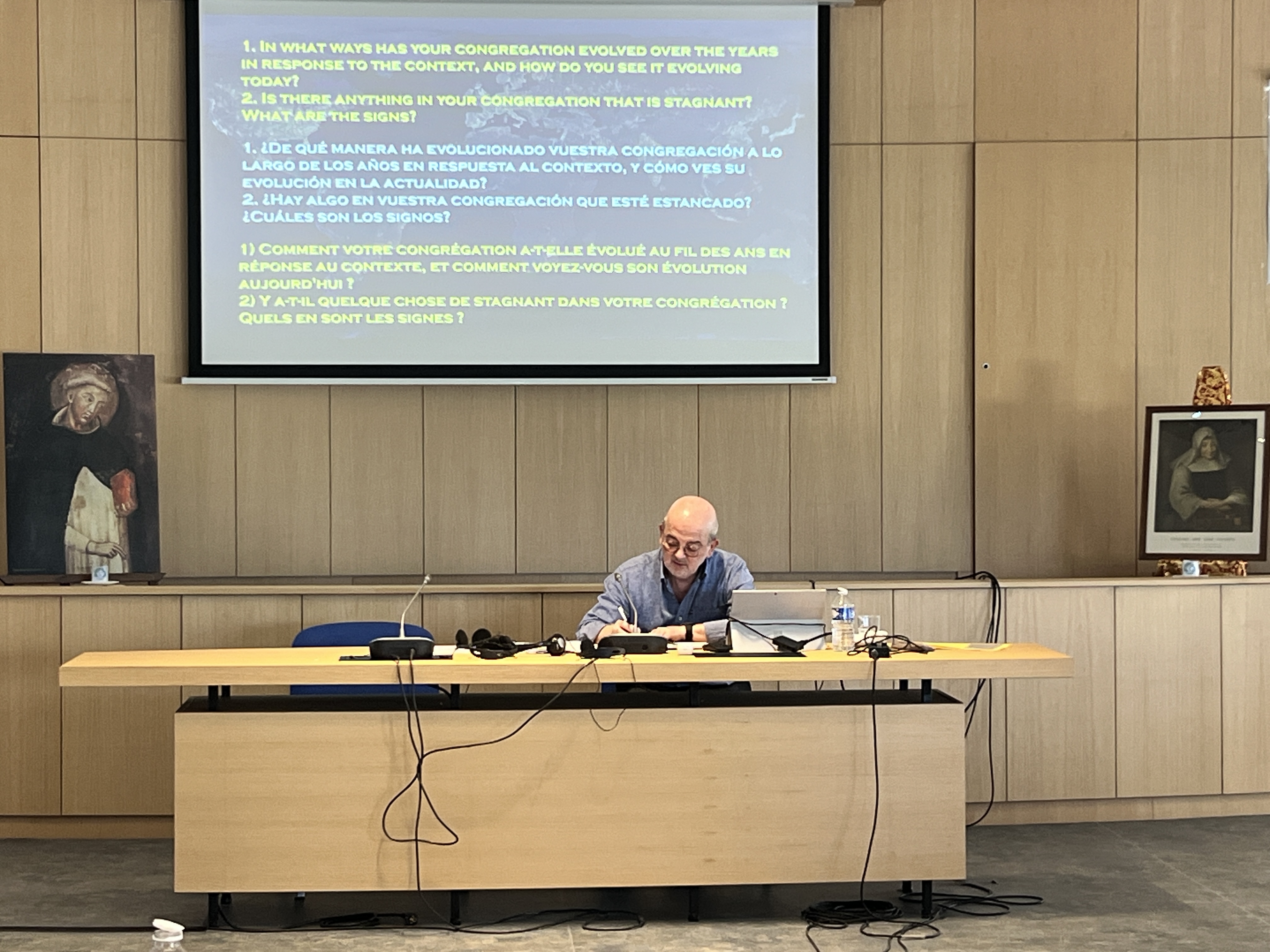Various and Diverse Works
- by Dominicas
-
in News
-
Hits: 336

La Grande Bretèche (Tours), 07/29/2024, Sr. Gemma Morató i Sendra and Sr. Conchi García Fernández - www.domipresen.com.- After a more restful day yesterday, we started a day full of various tasks and a lot of heat.
After Lauds, we began in the hall with the reading one acte, and then we were informed about the progress of the update work of the Ratio Formationis. Then we dealt with some motions presented to the chapter, and Sister Diana Gisela Dolorita read the report of the Red Juvenil Presentación (Youth Presentation Network), which has been working to establish relationships with young people, in a synodal style, in the structures of Colombia and the Caribbean over the past few years. The presentation culminated with a video where the responsible sisters and some young people shared their experiences and their dreams for the future. We were also shown the newly edited video "Towards the Canonization of Marie Poussepin," produced in Medellin.
In the afternoon, after a prayer to the Holy Spirit, Brother Marist Emili Turú, secretary general of the USG, presented the topic of the transformation of consecrated life based on history and context.
We began by observing numerous photos of the current global context and sharing what they evoke in us. He explained that in different civilizations, approximately six eras can be identified:
These eras repeat approximately every 300 years. Currently, it seems we are in the sixth era. In Gaudium et Spes, 54, a new era is mentioned, and Pope Francis speaks of an epochal change, indicating that something needs to die for a new era to be born, and in his encyclical Fratelli Tutti, the Pope highlights the "throwaway culture" and the "culture of encounter," insisting on the importance of focusing on people.
Brother Emili asserts that all signs point to the birth of a new era, illustrating this with an image by Mark Henson called "New Pioneers," symbolizing the transition from one side to the other. We hope that religious life will help to bring about a new world and be among those pioneers who help to move from chaos to calm... We are in a historical moment that profoundly influences us. Just as in biology, life is impossible if the membrane becomes rigid, and it is also dangerous if it is too permeable. We must seek this balance, even in organizations. When a living system changes, it tries to save itself and preserve its identity. If the system is open, its porous membrane takes in information, reorganizes to survive, and creates novelty and diversity.
Conversely, a closed system, without porosity, does not adapt, wears out, and dies. What happens in people also happens in religious life. Thus, Christian religious life has gone from fuga mundi (flight from the world) to a gradual reintegration into society. From the Benedictines, who built small cities, through the mendicant stage, expansion in America, and later to all continents. According to some authors, 75% of religious congregations created at some point have disappeared.
Religious life evolves or changes considering these points:
1. Emergence: Changes in society/Church lead to new movements. The new image differs from the previous one and is questioned if it is religious life.
2. Growth and success: New communities grow; the old ones succeed if they adopt the new image and mature.
3. Decline: Crisis; the dominant image is subjected to deep questioning. They seem not to adapt to the aspirations of the time. Some disappear.
4. Uphill (steep climb): Brief period of revitalization. New movements respond to new needs. We are here now, almost hitting bottom.
5. New image: Growth and success until a new image consolidates and the cycle repeats because society and the Church change.
Closed congregations disappear due to lack of communication with the outside.
He concludes that:
- As long as attention is kept on the world, the congregation will be blessed with growth.
- Seeking power, success, or survival is the beginning of decline.
- The new image tends towards increasing involvement in the world; those who isolate themselves from the world will not last.
- The three central elements in revitalization are: transformative response to the signs of the times, deep renewal in prayer life, faith centered on Christ, and reappropriation of the founding charism.
And he reads us the story by Washington Irving called "Rip Van Winkle." He says Rip Van Winkle had a few beers at the tavern where he noticed a picture of George III, the monarch at the time, went out, and fell asleep under a tree. When he woke up, he had a long beard and returned to the tavern, where a picture of George Washington was hanging. He had slept for 20 years… Martin Luther King commented on the story and said that the most impactful thing is not the 20 years he slept, but that he slept through a revolution that changed the course of history.
For group discussion, Brother Turú asks us:
- How has your congregation evolved over the years in response to the context, and how do you see its evolution today?
- Is there something in your Congregation that is stagnant? What are the signs?
Let's continue reflecting.


